Muhammad Zawad Mahmud
Machine Learning Meets Transparency in Osteoporosis Risk Assessment: A Comparative Study of ML and Explainability Analysis
May 01, 2025



Abstract:The present research tackles the difficulty of predicting osteoporosis risk via machine learning (ML) approaches, emphasizing the use of explainable artificial intelligence (XAI) to improve model transparency. Osteoporosis is a significant public health concern, sometimes remaining untreated owing to its asymptomatic characteristics, and early identification is essential to avert fractures. The research assesses six machine learning classifiers: Random Forest, Logistic Regression, XGBoost, AdaBoost, LightGBM, and Gradient Boosting and utilizes a dataset based on clinical, demographic, and lifestyle variables. The models are refined using GridSearchCV to calibrate hyperparameters, with the objective of enhancing predictive efficacy. XGBoost had the greatest accuracy (91%) among the evaluated models, surpassing others in precision (0.92), recall (0.91), and F1-score (0.90). The research further integrates XAI approaches, such as SHAP, LIME, and Permutation Feature Importance, to elucidate the decision-making process of the optimal model. The study indicates that age is the primary determinant in forecasting osteoporosis risk, followed by hormonal alterations and familial history. These results corroborate clinical knowledge and affirm the models' therapeutic significance. The research underscores the significance of explainability in machine learning models for healthcare applications, guaranteeing that physicians can rely on the system's predictions. The report ultimately proposes directions for further research, such as validation across varied populations and the integration of supplementary biomarkers for enhanced predictive accuracy.
Smart IoT Security: Lightweight Machine Learning Techniques for Multi-Class Attack Detection in IoT Networks
Feb 06, 2025Abstract:In the growing terrain of the Internet of Things (IoT), it is vital that networks are secure to protect against a range of cyber threats. Based on the strong machine learning framework, this study proposes novel lightweight ensemble approaches for improving multi-class attack detection of IoT devices. Using the large CICIoT 2023 dataset with 34 attack types distributed amongst 10 attack categories, we systematically evaluated the performance of a wide variety of modern machine learning methods with the aim of establishing the best-performing algorithmic choice to secure IoT applications. In particular, we explore approaches based on ML classifiers to tackle the biocharges characterized by the challenging and heterogeneous nature of attack vectors in IoT environments. The method that performed best was the Decision Tree, with an accuracy of 99.56% and an F1 score of 99.62%, showing that this model is capable of accurately and reliably detecting threats.The Random Forest model was the next best-performing model with 98.22% and an F1 score of 98.24%, suggesting that ML methods are quite effective in a situation of high-dimensional data. Our results highlight the potential for using ML classifiers in bolstering security for IoT devices and also serve as motivations for future investigations targeting scalable, keystroke-based attack detection systems. We believe that our method provides a new path to develop complex machine learning algorithms for low-resource IoT devices, balancing both accuracy and time efficiency needs. In summary, these contributions enrich the state of the art of the IoT security literature, laying down solid ground and guidelines for the deployment of smart, adaptive security in IoT settings.
Optimized IoT Intrusion Detection using Machine Learning Technique
Dec 03, 2024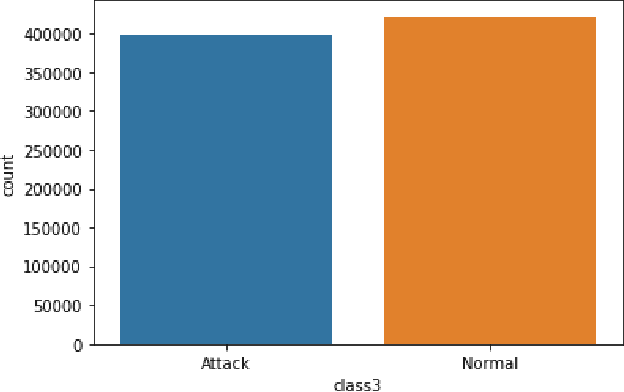
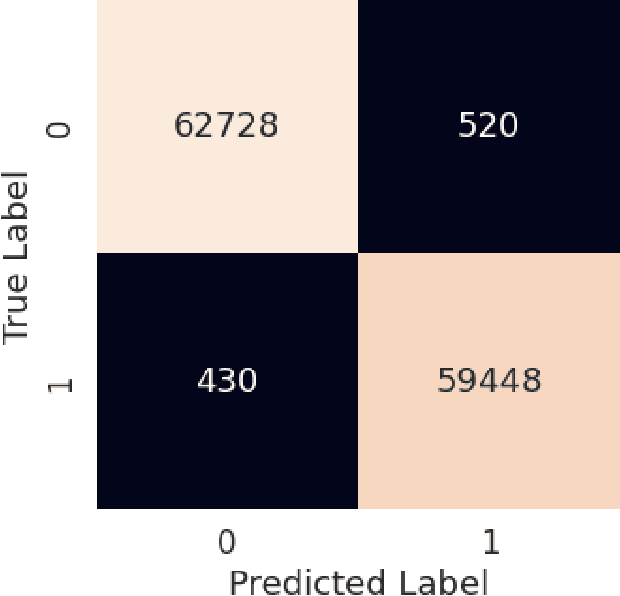
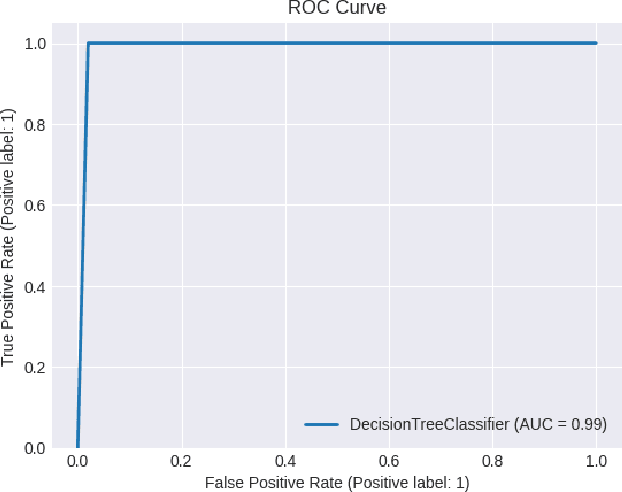
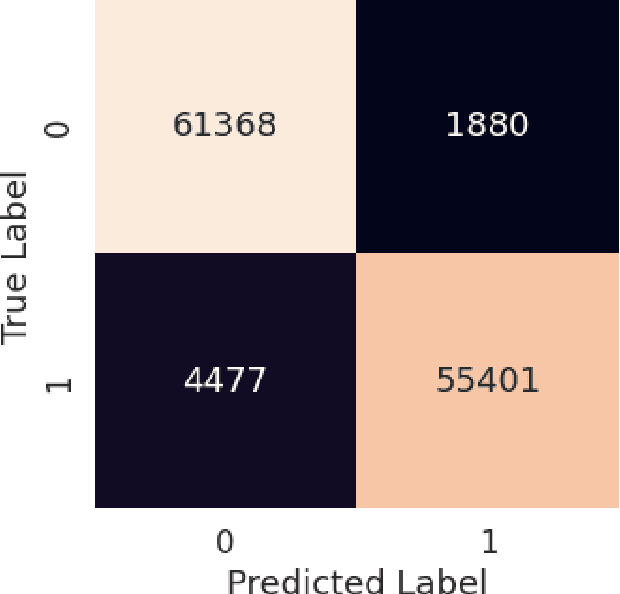
Abstract:An application of software known as an Intrusion Detection System (IDS) employs machine algorithms to identify network intrusions. Selective logging, safeguarding privacy, reputation-based defense against numerous attacks, and dynamic response to threats are a few of the problems that intrusion identification is used to solve. The biological system known as IoT has seen a rapid increase in high dimensionality and information traffic. Self-protective mechanisms like intrusion detection systems (IDSs) are essential for defending against a variety of attacks. On the other hand, the functional and physical diversity of IoT IDS systems causes significant issues. These attributes make it troublesome and unrealistic to completely use all IoT elements and properties for IDS self-security. For peculiarity-based IDS, this study proposes and implements a novel component selection and extraction strategy (our strategy). A five-ML algorithm model-based IDS for machine learning-based networks with proper hyperparamater tuning is presented in this paper by examining how the most popular feature selection methods and classifiers are combined, such as K-Nearest Neighbors (KNN) Classifier, Decision Tree (DT) Classifier, Random Forest (RF) Classifier, Gradient Boosting Classifier, and Ada Boost Classifier. The Random Forest (RF) classifier had the highest accuracy of 99.39%. The K-Nearest Neighbor (KNN) classifier exhibited the lowest performance among the evaluated models, achieving an accuracy of 94.84%. This study's models have a significantly higher performance rate than those used in previous studies, indicating that they are more reliable.
Deep Learning Approach for Enhancing Oral Squamous Cell Carcinoma with LIME Explainable AI Technique
Nov 21, 2024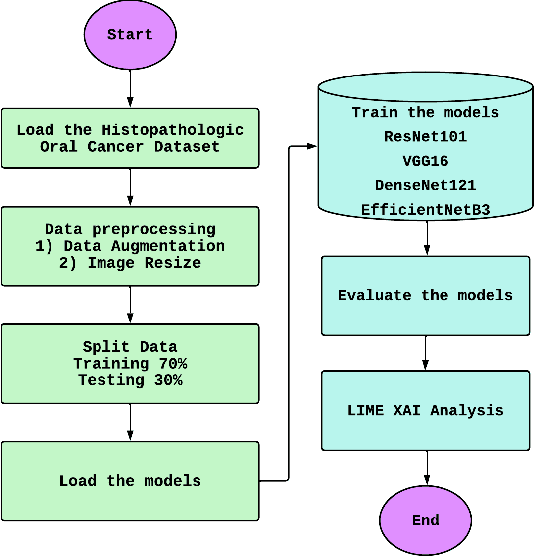
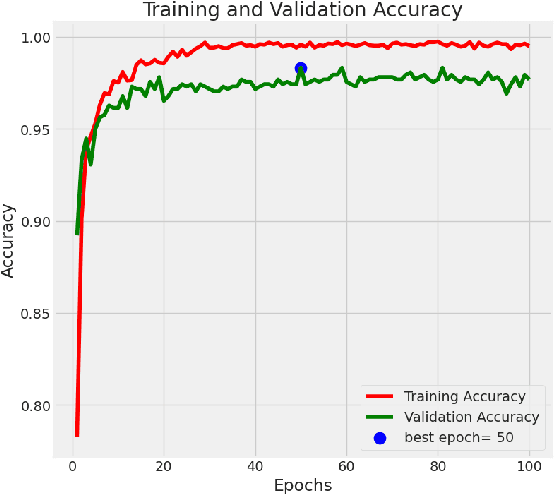
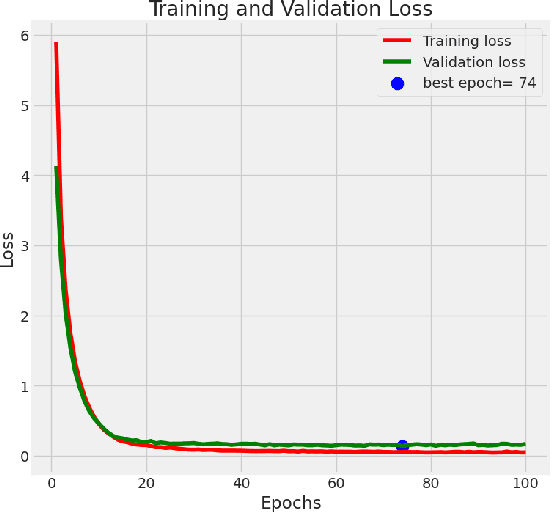
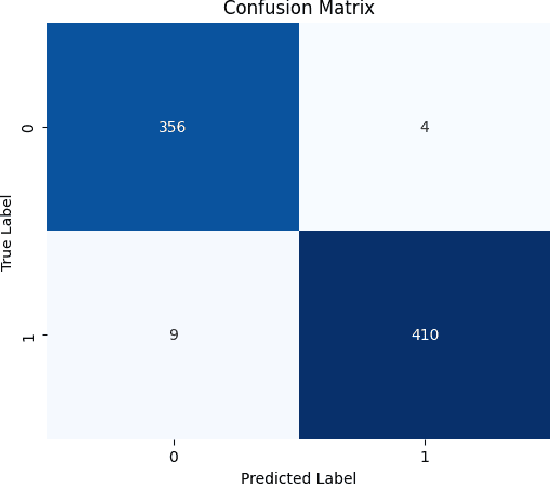
Abstract:The goal of the present study is to analyze an application of deep learning models in order to augment the diagnostic performance of oral squamous cell carcinoma (OSCC) with a longitudinal cohort study using the Histopathological Imaging Database for oral cancer analysis. The dataset consisted of 5192 images (2435 Normal and 2511 OSCC), which were allocated between training, testing, and validation sets with an estimated ratio repartition of about 52% for the OSCC group, and still, our performance measure was validated on a combination set that contains almost equal number of sample in this use case as entire database have been divided into half using stratified splitting technique based again near binary proportion but total distribution was around even. We selected four deep-learning architectures for evaluation in the present study: ResNet101, DenseNet121, VGG16, and EfficientnetB3. EfficientNetB3 was found to be the best, with an accuracy of 98.33% and F1 score (0.9844), and it took remarkably less computing power in comparison with other models. The subsequent one was DenseNet121, with 90.24% accuracy and an F1 score of 90.45%. Moreover, we employed the Local Interpretable Model-agnostic Explanations (LIME) method to clarify why EfficientNetB3 made certain decisions with its predictions to improve the explainability and trustworthiness of results. This work provides evidence for the possible superior diagnosis in OSCC activated from the EfficientNetB3 model with the explanation of AI techniques such as LIME and paves an important groundwork to build on towards clinical usage.
Enhancing Multi-Class Disease Classification: Neoplasms, Cardiovascular, Nervous System, and Digestive Disorders Using Advanced LLMs
Nov 19, 2024Abstract:In this research, we explored the improvement in terms of multi-class disease classification via pre-trained language models over Medical-Abstracts-TC-Corpus that spans five medical conditions. We excluded non-cancer conditions and examined four specific diseases. We assessed four LLMs, BioBERT, XLNet, and BERT, as well as a novel base model (Last-BERT). BioBERT, which was pre-trained on medical data, demonstrated superior performance in medical text classification (97% accuracy). Surprisingly, XLNet followed closely (96% accuracy), demonstrating its generalizability across domains even though it was not pre-trained on medical data. LastBERT, a custom model based on the lighter version of BERT, also proved competitive with 87.10% accuracy (just under BERT's 89.33%). Our findings confirm the importance of specialized models such as BioBERT and also support impressions around more general solutions like XLNet and well-tuned transformer architectures with fewer parameters (in this case, LastBERT) in medical domain tasks.
Sdn Intrusion Detection Using Machine Learning Method
Nov 08, 2024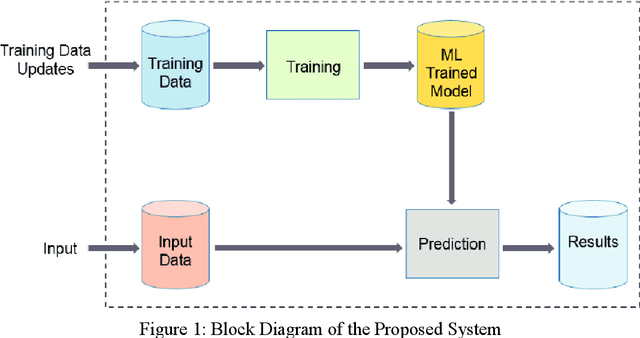

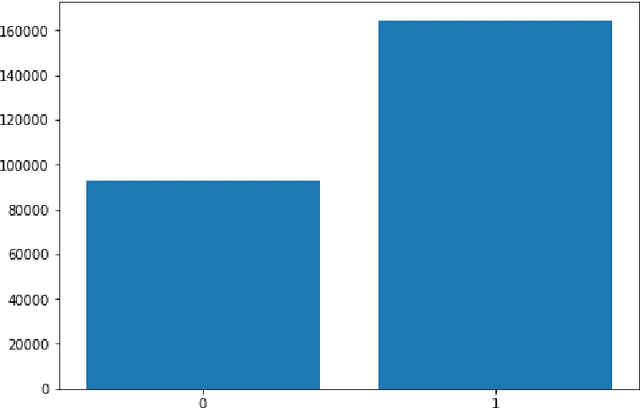
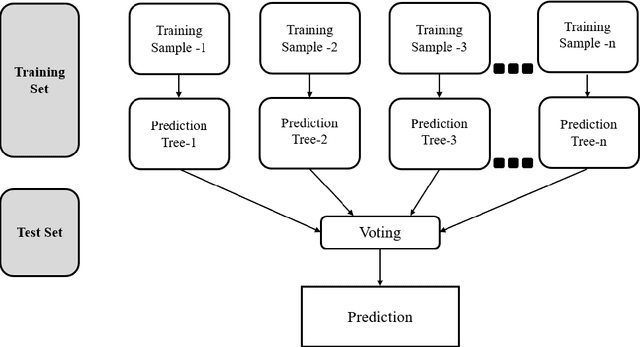
Abstract:Software-defined network (SDN) is a new approach that allows network control to become directly programmable, and the underlying infrastructure can be abstracted from applications and network services. Control plane). When it comes to security, the centralization that this demands is ripe for a variety of cyber threats that are not typically seen in other network architectures. The authors in this research developed a novel machine-learning method to capture infections in networks. We applied the classifier to the UNSW-NB 15 intrusion detection benchmark and trained a model with this data. Random Forest and Decision Tree are classifiers used to assess with Gradient Boosting and AdaBoost. Out of these best-performing models was Gradient Boosting with an accuracy, recall, and F1 score of 99.87%,100%, and 99.85%, respectively, which makes it reliable in the detection of intrusions for SDN networks. The second best-performing classifier was also a Random Forest with 99.38% of accuracy, followed by Ada Boost and Decision Tree. The research shows that the reason that Gradient Boosting is so effective in this task is that it combines weak learners and creates a strong ensemble model that can predict if traffic belongs to a normal or malicious one with high accuracy. This paper indicates that the GBDT-IDS model is able to improve network security significantly and has better features in terms of both real-time detection accuracy and low false positive rates. In future work, we will integrate this model into live SDN space to observe its application and scalability. This research serves as an initial base on which one can make further strides forward to enhance security in SDN using ML techniques and have more secure, resilient networks.
Chronic Obstructive Pulmonary Disease Prediction Using Deep Convolutional Network
Nov 03, 2024



Abstract:AI and deep learning are two recent innovations that have made a big difference in helping to solve problems in the clinical space. Using clinical imaging and sound examination, they also work on improving their vision so that they can spot diseases early and correctly. Because there aren't enough trained HR, clinical professionals are asking for help with innovation because it helps them adapt to more patients. Aside from serious health problems like cancer and diabetes, the effects of respiratory infections are also slowly getting worse and becoming dangerous for society. Respiratory diseases need to be found early and treated quickly, so listening to the sounds of the lungs is proving to be a very helpful tool along with chest X-rays. The presented research hopes to use deep learning ideas based on Convolutional Brain Organization to help clinical specialists by giving a detailed and thorough analysis of clinical respiratory sound data for Ongoing Obstructive Pneumonic identification. We used MFCC, Mel-Spectrogram, Chroma, Chroma (Steady Q), and Chroma CENS from the Librosa AI library in the tests we ran. The new system could also figure out how serious the infection was, whether it was mild, moderate, or severe. The test results agree with the outcome of the deep learning approach that was proposed. The accuracy of the framework arrangement has been raised to a score of 96% on the ICBHI. Also, in the led tests, we used K-Crisp Cross-Approval with ten parts to make the presentation of the new deep learning approach easier to understand. With a 96 percent accuracy rate, the suggested network is better than the rest. If you don't use cross-validation, the model is 90% accurate.
Advanced Vision Transformers and Open-Set Learning for Robust Mosquito Classification: A Novel Approach to Entomological Studies
Aug 12, 2024



Abstract:Mosquito-related diseases pose a significant threat to global public health, necessitating efficient and accurate mosquito classification for effective surveillance and control. This work presents an innovative approach to mosquito classification by leveraging state-of-the-art vision transformers and open-set learning techniques. A novel framework has been introduced that integrates Transformer-based deep learning models with comprehensive data augmentation and preprocessing methods, enabling robust and precise identification of ten mosquito species. The Swin Transformer model achieves the best performance for traditional closed-set learning with 99.80\% accuracy and 0.998 F1 score. The lightweight MobileViT technique attains an almost similar accuracy of 98.90\% with significantly reduced parameters and model complexities. Next, the applied deep learning models' adaptability and generalizability in a static environment have been enhanced by using new classes of data samples during the inference stage that have not been included in the training set. The proposed framework's ability to handle unseen classes like insects similar to mosquitoes, even humans, through open-set learning further enhances its practical applicability employing the OpenMax technique and Weibull distribution. The traditional CNN model, Xception, outperforms the latest transformer with higher accuracy and F1 score for open-set learning. The study's findings highlight the transformative potential of advanced deep-learning architectures in entomology, providing a strong groundwork for future research and development in mosquito surveillance and vector control. The implications of this work extend beyond mosquito classification, offering valuable insights for broader ecological and environmental monitoring applications.
 Add to Chrome
Add to Chrome Add to Firefox
Add to Firefox Add to Edge
Add to Edge